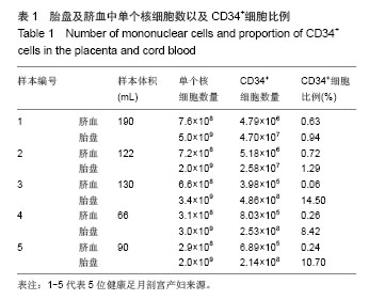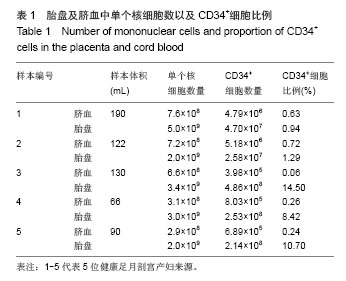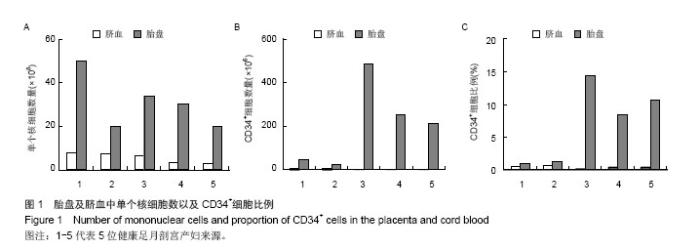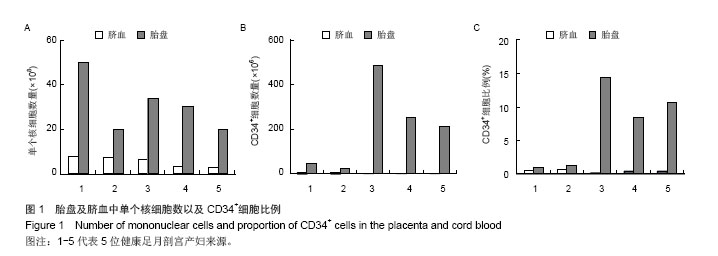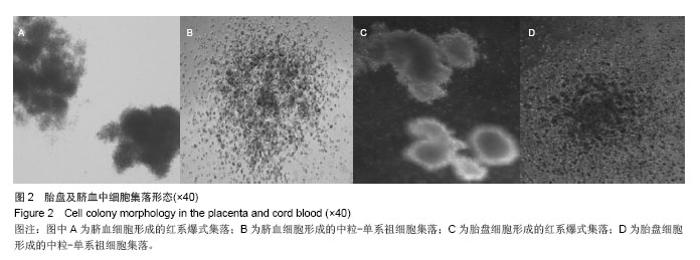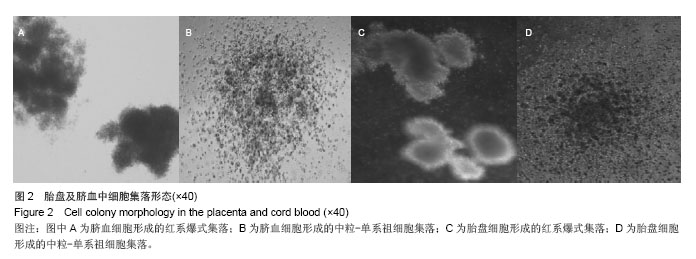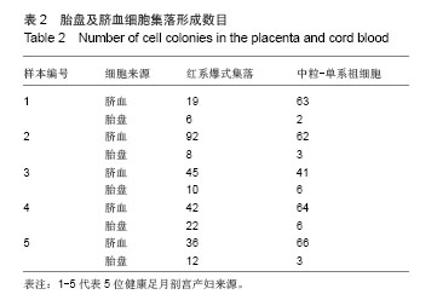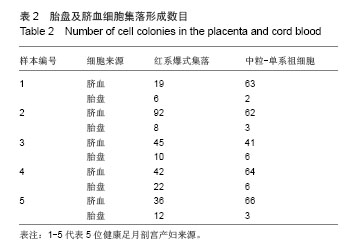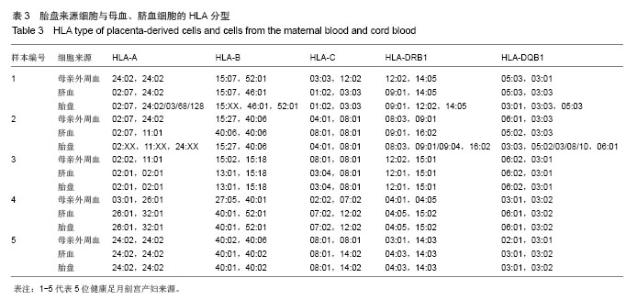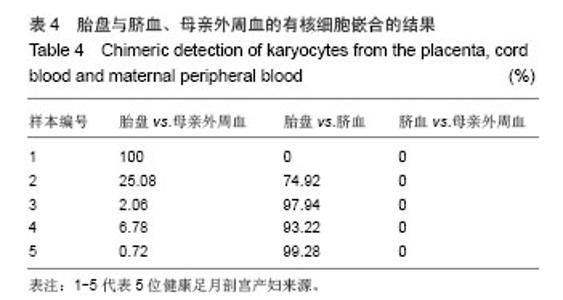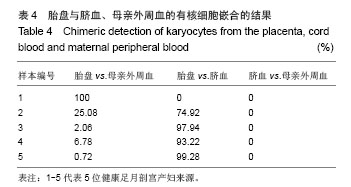| [1]黄晓军.造血干细胞移植展望[J].中国实用内科杂志,2014(2):97- 100.
[2]Rocha V, Labopin M, Sanz G, et al. Transplants of umbilical- cord blood or bone marrow from unrelated donors in adults with acute leukemia. N Engl J Med. 2004;351(22):2276-2285.
[3]Majhail NS, Brunstein CG, Wagner JE. Double umbilical cord blood transplantation. Curr Opin Immunol. 2006;18(5): 571-575.
[4]孙自敏.脐血造血干细胞移植研究进展[J].中国实用内科杂志, 2014(2):127-131.
[5]黄绍良,周敦华.非血缘异基因脐血造血干细胞移植现状、问题与对策[J].中国实验血液学杂志,2009,17(1):1-7.
[6]Rossant J, Cross JC. Placental development: lessons from mouse mutants. Nat Rev Genet. 2001;2(7):538-548.
[7]Tsagias N, Koliakos I, Lappa M, et al. Placenta perfusion has hematopoietic and mesenchymal progenitor stem cell potential. Transfusion. 2011;51(5):976-985.
[8]Yen BL, Huang HI, Chien CC, et al. Isolation of multipotent cells from human term placenta. Stem Cells. 2005;23(1):3-9.
[9]Parolini O, Alviano F, Bagnara GP, et al. Concise review: isolation and characterization of cells from human term placenta: outcome of the first international Workshop on Placenta Derived Stem Cells. Stem Cells. 2008;26(2): 300-311.
[10]Delo DM, De Coppi P, Bartsch G Jr, et al. Amniotic fluid and placental stem cells. Methods Enzymol. 2006;419:426-438.
[11]Miki T, Strom SC. Amnion-derived pluripotent/multipotent stem cells. Stem Cell Rev. 2006;2(2):133-142.
[12]Di Bernardo J, Maiden MM, Jiang G, et al. Paracrine regulation of fetal lung morphogenesis using human placenta-derived mesenchymal stromal cells. J Surg Res. 2014;190(1):255-263.
[13]Han ZB, Wang YW, Wang T, et al. Isolation and biological characteristics of mesenchymal stem cells derived from human placenta decidua basalis. Zhongguo Shi Yan Xue Ye Xue Za Zhi. 2013;21(3):754-759.
[14]Manochantr S, U-pratya Y, Kheolamai P, et al. Immunosuppressive properties of mesenchymal stromal cells derived from amnion, placenta, Wharton's jelly and umbilical cord. Intern Med J. 2013;43(4):430-439.
[15]Patel J, Shafiee A, Wang W, et al. Novel isolation strategy to deliver pure fetal-origin and maternal-origin mesenchymal stem cell (MSC) populations from human term placenta. Placenta. 2014;35(11):969-971.
[16]Ueno H, Weissman IL. The origin and fate of yolk sac hematopoiesis: application of chimera analyses to developmental studies. Int J Dev Biol. 2010;54(6-7): 1019-1031.
[17]Till JE, McCulloch EA. A direct measurement of the radiation sensitivity of normal mouse bone marrow cells. 1961. Radiat Res. 2012 Aug;178(2):AV3-7.
[18]Weissman IL. Stem cells: units of development, units of regeneration, and units in evolution. Cell. 2000;100(1): 157-168.
[19]Dzierzak E, Robin C. Placenta as a source of hematopoietic stem cells. Trends Mol Med. 2010;16(8):361-367.
[20]Robin C, Bollerot K, Mendes S, et al. Human placenta is a potent hematopoietic niche containing hematopoietic stem and progenitor cells throughout development. Cell Stem Cell. 2009;5(4):385-395.
[21]Nimgaonkar MT, Roscoe RA, Persichetti J, et al. A unique population of CD34+ cells in cord blood. Stem Cells. 1995; 13(2):158-166.
[22]In 't Anker PS, Scherjon SA, Kleijburg-van der Keur C, et al. Isolation of mesenchymal stem cells of fetal or maternal origin from human placenta. Stem Cells. 2004;22(7):1338-1345.
[23]Huppertz B. The anatomy of the normal placenta. J Clin Pathol. 2008;61(12):1296-1302.
[24]Kanda Y, Chiba S, Hirai H, et al. Allogeneic hematopoietic stem cell transplantation from family members other than HLA-identical siblings over the last decade (1991-2000). Blood. 2003;102(4):1541-1547.
[25]Aversa F, Tabilio A, Velardi A, et al. Treatment of high-risk acute leukemia with T-cell-depleted stem cells from related donors with one fully mismatched HLA haplotype. N Engl J Med. 1998;339(17):1186-1193.
[26]Champlin RE, Passweg JR, Zhang MJ, et al. T-cell depletion of bone marrow transplants for leukemia from donors other than HLA-identical siblings: advantage of T-cell antibodies with narrow specificities. Blood. 2000;95(12):3996-4003.
[27]Blau IW, Basara N, Serr A, et al. A second unrelated bone marrow transplant: successful quantitative monitoring of mixed chimerism using a highly discriminative PCR-STR system. Clin Lab Haematol. 1999;21(2):133-138.
[28]Budowle B, Shea B, Niezgoda S, et al. CODIS STR loci data from 41 sample populations. J Forensic Sci. 2001;46(3):453- 489.
[29]de Weger RA, Tilanus MG, Scheidel KC, et al. Monitoring of residual disease and guided donor leucocyte infusion after allogeneic bone marrow transplantation by chimaerism analysis with short tandem repeats. Br J Haematol. 2000; 110(3):647-653.
[30]Thiede C, Bornhäuser M, Oelschlägel U, et al. Sequential monitoring of chimerism and detection of minimal residual disease after allogeneic blood stem cell transplantation (BSCT) using multiplex PCR amplification of short tandem repeat-markers. Leukemia. 2001;15(2):293-302.
[31]Grubic Z, Stingl K, Cecuk-Jelicic E, et al. Evaluation of mixed chimerism in bone marrow transplantation program in Croatia. Transplant Proc. 2005;37(2):1388-1391.
[32]Gardiner N, Lawler M, O'Riordan JM, et al. Monitoring of lineage-specific chimaerism allows early prediction of response following donor lymphocyte infusions for relapsed chronic myeloid leukaemia. Bone Marrow Transplant. 1998; 21(7):711-719. |
